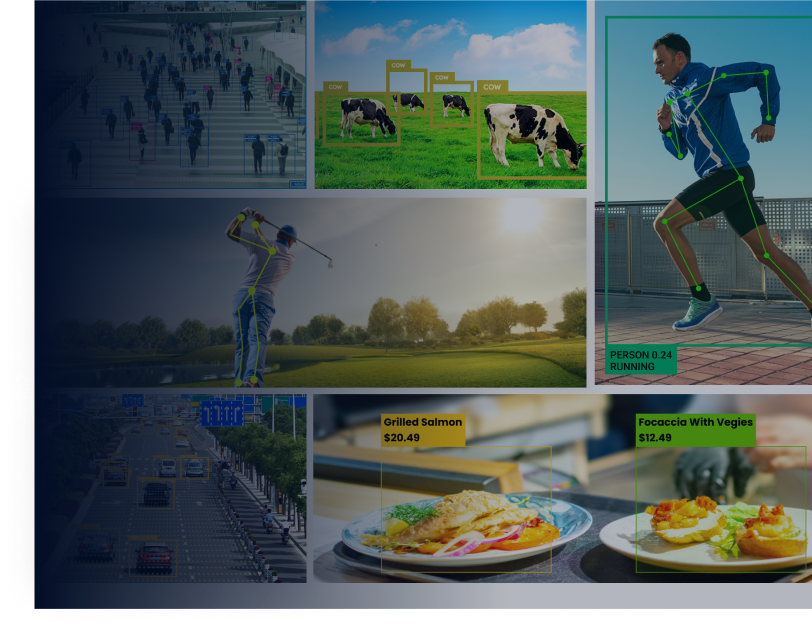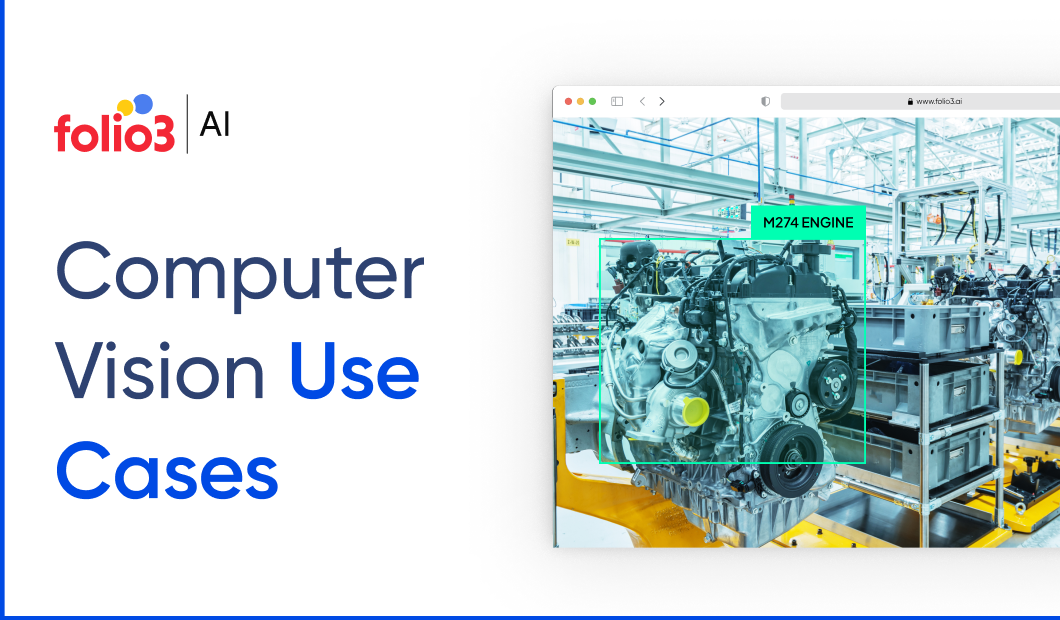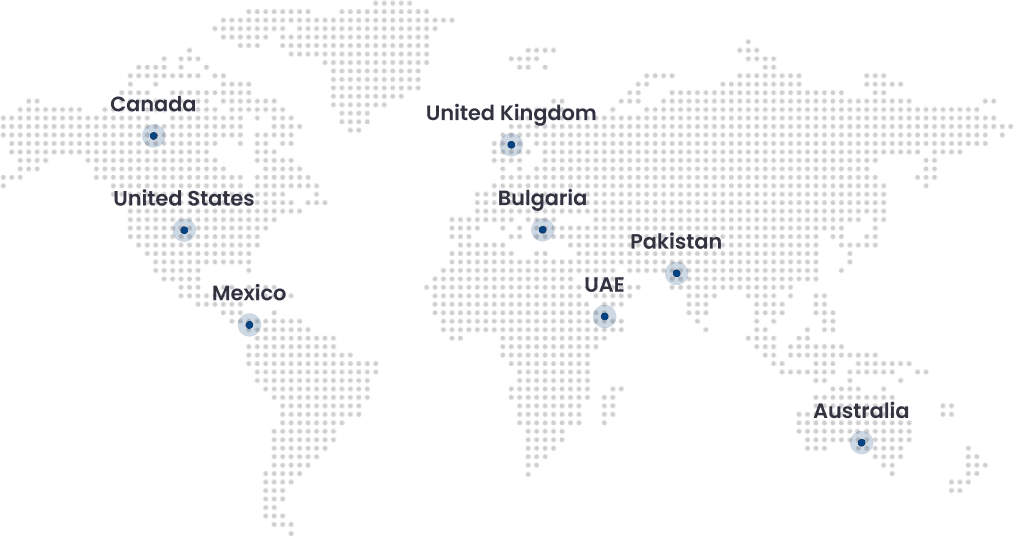Computer vision is the foundation of AI-powered innovations. It enables self-driving cars to detect pedestrians, facial recognition systems to authenticate users, and AI-powered medical imaging to identify diseases with unmatched precision.
Just look at how Tesla’s Autopilot navigates traffic using real-time object detection or how Apple’s Face ID secures devices with advanced facial recognition. Even in healthcare, AI-driven tools like Google’s DeepMind are diagnosing eye diseases with accuracy rivaling top ophthalmologists.
However, computer vision applications do not just analyze. Its AI-driven ecosystems enable machines to make intelligent, real-time decisions with unprecedented accuracy. This article explores how Computer Vision reshapes industries, from sports to agriculture. Keep reading to discover its most impactful applications.
What is Computer Vision?
Computer vision is a branch of artificial intelligence (AI) that enables machines to interpret and make decisions based on visual input—images, videos, and real-time camera feeds.
By mimicking the human eye and brain, computer vision allows systems to recognize objects, detect details, and understand complex environments.
Why It Matters Today
With the rise of automation, smart cities, and personalized technologies, computer vision has become an indispensable part of modern industry.
It helps reduce human error, improve operational efficiency, and make processes more intelligent and responsive.
From agriculture to healthcare, this AI-powered capability is enhancing how work gets done across sectors.
Computer Vision Applications Across Industries
Computer vision is the most salient force in modern industries, empowering machines to analyze, comprehend, perceive their environment. Its ability to really get the most inscrutable visual, with the utmost accuracy, helps propel innovation across sectors.
Look at Amazon’s use of robotics and computer vision, which has transformed its logistics, with 750,000 AI-powered robots handling heavy lifting and sorting.
This automation accelerates processes and will save the company $10 billion annually by 2030. Here are some examples of computer vision in different industries.
1- Sports
Sports Video Analysis
Sports video analysis is a powerful tool that entirely relies on computer vision to ameliorate performance, strategy, and fan engagement. It accurately detects and tracks player and ball movements, providing insights into game dynamics. This technology is used across sports like football, basketball, and cricket to record precise 3D trajectories and predict ball paths.
Also, Integrating computer vision into VAR systems makes decisions faster and more accurate by analyzing video sequences. This could eventually lead to fully automated VAR. High-resolution video analysis also helps evaluate athlete performance, improve training methods, and boost team performance.
Coaches use this data to design training routines based on areas that need improvement.
Sponsorship Intelligence with AI & Computer Vision
AI-driven sponsorship intelligence, especially with computer vision, helps analyze and improve brand visibility in sports. As computer vision aids in real-time logo detection, analyzing brand placements in videos to provide actionable insights on brand visibility and exposure frequency. This technology offers accurate and scalable data analysis, overcoming manual analysis limitations.
It tracks every brand logo appearance, providing comprehensive visibility metrics. With this insight, brands can establish their presence and optimize their sponsorship strategies based on real-time data, ensuring maximum ROI from sponsorship investments.
This strategic decision-making capability helps brands refine their marketing efforts and maximize their presence during sports events.
Football Video Analysis
Football video analysis uses computer vision to really strengthen the team bond. Key features include.
- Object Detection and Tracking: Technologies like YOLO are used for real-time object detection, tracking players, referees, and the ball across frames. This helps understand game dynamics and player interactions.
- Action Recognition: Computer vision systems can recognize actions such as dribbling, passing, and tackling, providing detailed insights into player behavior and team strategies.
- Player Positioning and Strategy: By really focusing on the football and player momentum, coaches can maintain the rhythm of the game
Basketball Video Analysis
Basketball video analysis employs computer vision to better notice and visualize the ball’s position. Key aspects include.
- Player Tracking: Computer vision tools automatically track player positions on the court, feeding this data into machine learning models to recognize specific plays.
- Play Recognition: The system analyzes player movements, ball passes, and court positioning to identify common offensive and defensive plays, aiding in opponent scouting and strategy refinement.
- Real-Time Feedback: Coaches receive real-time insights to make informed decisions during games, such as substitutions and defensive adjustments
Baseball Video Analysis
Baseball video analysis integrates computer vision to track player movements and analyze swing mechanics. Key Aspects include.
- Player Movement Analysis: Tracking player movements to assess performance and improve strategies.
- Ball Trajectory Analysis: Predicting ball trajectories to enhance defensive positioning and pitching strategies.
- Performance Enhancement: Using data to refine player skills and team tactics.
Cricket Video Analysis
Cricket video analysis leverages computer vision to track player movements, analyze ball trajectories, and refine team strategies. Key aspects include:
- Player Movement Tracking: AI-powered systems monitor player positions, fielding patterns, and running between the wickets to assess performance.
- Ball Trajectory Prediction: Advanced vision models predict ball movement, helping in analyzing bowling speeds, swing, spin, and bounce variations.
- Shot and Bowling Analysis: AI evaluates batting techniques, shot selection, and bowling actions to provide insights for skill improvement.
- Umpiring Assistance: AI-driven systems enhance umpiring accuracy by detecting no-balls, LBW decisions, and edge detections through real-time video processing.
- Strategy Optimization: Coaches use data-driven insights to fine-tune match strategies, field placements, and player decisions based on historical and live match analysis.
2. Automotive & Transportation
Autonomous Vehicles (Self-Driving Cars, ADAS)
Autonomous vehicles rely heavily on computer vision to perceive their environment and make decisions. This technology enables vehicles to detect objects, track lanes, and recognize traffic signs, ensuring safe and efficient operations. Key applications include.
- Object Detection and Classification: Autonomous vehicles use computer vision to identify and categorize objects like pedestrians, vehicles, and road signs, allowing them to avoid collisions and handle complex road conditions.
- Lane Detection and Tracking: Computer vision helps vehicles maintain proper lane positioning by analyzing road markings and adapting to changes in lane curvature or disruptions.
- Depth Estimation and Sensor Fusion: These techniques improve spatial awareness and reliability, even in challenging conditions such as fog or nighttime driving.
Vehicle Detection
Vehicle detection is a core application of computer vision in transportation, enabling real-time identification and tracking of vehicles on roads. AI-powered models analyze traffic flow, detect anomalies, and assess vehicle speed, contributing to improved traffic management and accident prevention.
Advanced deep learning techniques allow systems to distinguish between different types of vehicles, such as cars, trucks, and motorcycles, helping optimize road safety measures. This technology is also used in autonomous driving systems, assisting self-driving cars in making accurate decisions by recognizing surrounding vehicles and predicting their movements.
License Plate Recognition (Smart Toll Systems)
License Plate Recognition (LPR) technology uses AI and optical character recognition (OCR) to automatically read and process vehicle license plates. This is widely used in smart toll systems, parking management, and law enforcement for easy vehicle identification. LPR systems reduce congestion at toll booths by enabling automatic payments and entry/exit monitoring, eliminating the need for manual checks.
Advanced LPR models integrate sensor fusion and high-resolution imaging to ensure high accuracy, even in challenging conditions such as poor lighting, adverse weather, or high-speed vehicle motion.
3. Agriculture & Farming
Solar Inspection
Solar inspection in agriculture is not a primary focus, but solar farms increasingly use AI-powered drones. These drones, equipped with high-resolution cameras and thermal imaging, quickly detect defects such as cracks, soiling, and PID effects in solar panels. This technology enhances efficiency, reduces costs, and ensures peak performance by identifying issues early, maximizing energy output and ROI.
AI Terrain Mapping
AI terrain mapping in agriculture involves using drones and satellite imagery to create detailed maps of farm terrains. This process helps farmers understand soil properties, moisture levels, and topography, which are crucial for crop planning and resource allocation. Farmers can strategically allocate resources, minimize inefficiencies, and maximize yield potential with data-driven precision by integrating these geospatial insights.
Automated Harvesting & Plant Growth Monitoring
Automated harvesting and plant growth monitoring use computer vision to optimize agricultural processes. Harvesting robots with vision systems can identify ripe fruits and vegetables, ensuring precise and efficient harvesting. Also, computer vision monitors plant health and growth stages, allowing for timely interventions to prevent disease and pests, thus refining crop quality and yield.
Livestock Monitoring and Behavior Analysis
Livestock monitoring and behavior analysis leverage computer vision to track animal health and behavior. Systems integrate IoT and computer vision to monitor feeding, drinking, and other behaviors, detecting abnormalities that could indicate health issues. This technology improves animal welfare, reduces disease spread, and enhances farm productivity.
AI Wind Turbine Inspection
While specific details on AI wind turbine inspection in agriculture are not provided, similar technologies used in other industries involve drones equipped with high-resolution cameras and sensors to inspect turbines for damage or wear. This approach enhances maintenance efficiency, reduces downtime, and improves overall energy production by detecting issues early.
However, wind turbine inspection is more commonly associated with the energy sector rather than agriculture.
4. Healthcare
Computer vision supports faster and more accurate diagnosis, making healthcare delivery more proactive and personalized.
Hospitals and medical systems use it to enhance imaging, detect conditions early, and improve patient care.
- Medical Imaging: Enhances interpretation of CT scans, MRIs, and X-rays to aid in accurate diagnosis and treatment planning.
- Disease Detection: Uses trained algorithms to identify subtle signs of diseases like cancer or diabetic retinopathy in early stages.
- Patient Monitoring: Applies video analytics to monitor posture, movement, and alert caregivers to potential issues such as falls or irregular activity.
- Surgical Assistance: Assists surgeons with real-time visuals, offering precision and reducing the margin of error.
- Medication Adherence: Tracks whether patients take prescribed medicine by visually identifying actions or pill counts.
5. Retail and E-commerce
Retailers use computer vision to personalize customer experiences and streamline the in-store and digital shopping journey.
It helps businesses understand shopper behavior and automate retail operations efficiently.
- Visual Search: Enables customers to search for products using photos, improving discovery and conversion.
- Customer Analytics: Tracks shopper movement and dwell time to optimize store layouts and marketing strategies.
- Automated Checkout: Utilizes sensors and cameras to enable seamless checkout without manual scanning or human intervention.
- Shelf Monitoring: Detects stock levels and planogram compliance in real time.
- Loss Prevention: Identifies suspicious behavior to prevent theft and shrinkage.
6. Manufacturing and Industrial Automation
Industrial environments benefit from real-time visual analytics that improve accuracy, safety, and productivity.
Computer vision ensures quality control, equipment uptime, and optimized workflows in manufacturing settings.
- Defect Detection: Automatically inspects manufactured parts to detect surface defects or structural anomalies in real time.
- Predictive Maintenance: Analyzes equipment conditions via visual cues to prevent breakdowns before they occur.
- Robotics: Empowers robots to navigate, identify parts, and perform complex tasks based on visual data.
- Assembly Verification: Checks that components are correctly placed and aligned during production.
- Worker Safety Monitoring: Tracks safety gear usage and hazardous actions to ensure compliance.
7. Security and Surveillance
Computer vision enhances situational awareness and response in real-time across private and public security systems.
It helps detect threats, manage access, and ensure safety in various environments.
- Facial Recognition: Authenticates individuals at entry points, aiding in both convenience and access security.
- Threat Detection: Monitors perimeters and sensitive areas for abnormal activity or unauthorized access.
- Crowd Monitoring: Evaluates crowd density and movement to ensure public safety during large gatherings.
- License Plate Recognition: Identifies and logs vehicle entries in restricted areas.
- Suspicious Behavior Detection: Flags actions that may indicate security risks.
8. Financial Services
Financial platforms utilize visual data to enable secure, efficient, and user-friendly service delivery.
Vision-powered tools are transforming identity verification, fraud prevention, and digital banking experiences.
- ID Verification: Processes scanned documents for onboarding, reducing friction and enhancing compliance.
- ATM Monitoring: Adds an extra security layer by verifying users and detecting suspicious activity.
- Customer Insights: Analyzes facial expressions and interactions to tailor support and services.
- Fraud Detection: Identifies unusual ATM or mobile behaviors using visual pattern recognition.
- Document Processing: Digitizes and extracts data from physical documents for automated workflow integration.
9. Logistics and Supply Chain
Computer vision simplifies inventory management and automates logistics for faster, more accurate operations.
It ensures product integrity, optimizes routing, and enhances warehouse productivity.
- Barcode Scanning: Improves accuracy and speed in inventory tracking through real-time video-based scanning.
- Package Inspection: Identifies damaged packaging, missing labels, or incorrect contents before delivery.
- Warehouse Automation: Powers autonomous robots that handle, sort, and move inventory efficiently.
- Dock Monitoring: Tracks loading and unloading activities to streamline logistics.
- Fleet Management: Uses onboard cameras to monitor driver performance and vehicle condition.
Final words
This article has provided you with the indelible transformative power of computer vision and deep learning across various industries. At Folio3 AI, we offer these AI solutions, empowering businesses with advanced computer vision technology. Our comprehensive AI-powered platforms help industry leaders, enterprises, and government organizations develop, deploy, and scale their vision-based applications with ease.
With Folio3 AI end-to-end computer vision solutions, you can:
✔ Automate complex visual tasks with AI-driven insights
✔ Deploy and scale enterprise-grade vision systems effortlessly
✔ Process real-time video from any standard camera (CCTV, surveillance, USB, etc.)
✔ Achieve faster results with intelligent, no-code/low-code platforms
We offer comprehensive computer vision services tailored to your business needs. Its impact will only expand as AI advances, paving the way for the latest innovations.

Areeb is a versatile machine learning engineer with a focus on computer vision and auto-generative models. He excels in custom model training, crafting innovative solutions to meet specific client needs. Known for his technical brilliance and forward-thinking approach, Areeb constantly pushes the boundaries of AI by incorporating cutting-edge research into practical applications, making him a respected developer in folio3.









